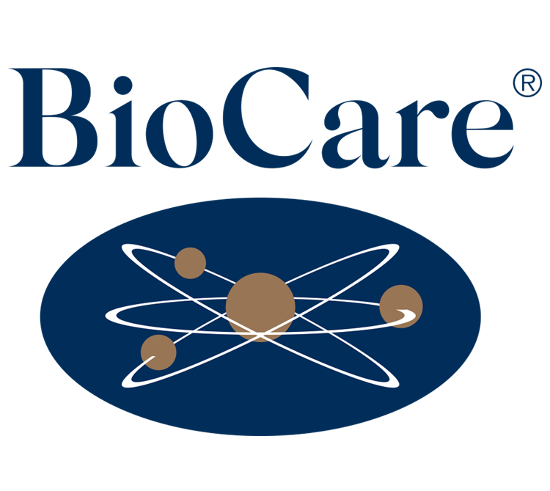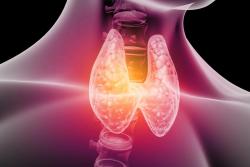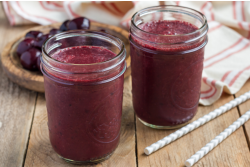The Vaginal Microbiome & Female Health
Millions of women worldwide are affected by issues with vaginal health of some form in their lifetime. Symptoms such as soreness and itching in and around the vagina; abnormal vaginal discharge, with or without a smell; pain upon intercourse, and bleeding between periods, can be common with many women who suffer.1
The health of our vagina depends on several factors, namely a healthy balance of the hormones oestrogen and progesterone, good quality connective tissue, and a robust and diverse balance of beneficial bacteria that reside in the genital area which make up what we call the vaginal microbiome.2
A healthy vaginal microbiome is composed mainly of Lactobacillus strains which produce lactic acid, which helps to maintain the vaginal pH within the required 3.5-4.5. This acidity prevents opportunistic bacteria from proliferating uncontrollably. Lactobacillus strains also by secrete antimicrobial peptides such as hydrogen peroxide and bacteriocin3 which keeps foreign bacteria at bay. Imbalances in beneficial bacteria can result in infection, and/or inflammation, due to a drop in lactic acid production and hence reduced ability to have an antimicrobial effect. 4
Oestrogen is particularly important to promote healthy epithelial and connective tissues of the vagina, therefore changes in oestrogen levels have their part to play in the lubrication and bacterial balance of the vagina. Natural fluctuations in oestrogen over a woman’s lifetime causes the vaginal microbiome to change and evolve.
The vagina has a more alkaline pH during childhood and is predominantly colonised by cutaneous and faecal microorganisms, but as women go through puberty the hormonal changes cause the vaginal pH to decrease, becoming more acidic, which allows Lactobacillus species to grow.5 The vaginal microbiome also changes during pregnancy, showing reductions in richness and diversity, becoming predominantly Lactobacillus strains due to oestrogen affecting the thickness of vaginal mucosa. This change may be a contributing factor to an increased risk of vulvovaginal candidiasis during pregnancy.6 There are significant changes to the vaginal microbiome again during the menopause.7 As oestrogen levels decrease, we also see a reduction in Lactobacilli, leading to colonisation with bacteria, including Staphylococcus, which leads to an increase in the pH of the vagina.8,9 The combination of low oestrogen and reduced Lactobacilli strains can contribute to symptoms such as vulvovaginal atrophy, vaginal dryness, and infections including vulvovaginal candidiasis and bacterial vaginosis.10,11
Other common causes of vaginal microbiome disruption include:
- Gut dysbiosis.
- High sugar diet, smoking & alcohol consumption.
- Changes in the vaginal pH as a result of exposure to semen.
- Vaginal douching.
- Reduced immune function (due to stress, for example).
- Medications: Oral Contraceptive Pill (OCP), Hormone Replacement Therapy (HRT), steroids,12 and antibiotics.
Vaginal Dysbiosis & Infections
Bacterial vaginosis (BV) is a vaginal infection that one in three women will develop at some point in their life. It is the most common cause of unusual vaginal discharge. BV results from the proliferation of pathogenic bacteria, namely Gardnerella vaginalis and Mycoplasma hominis, which reduce the local colonies of beneficial bacteria, and hence reduce overall acidity, antimicrobial activity, and disrupt vaginal mucus production. This commonly presents itself through symptoms such as:
- Thin grey coloured discharge.
- A strong fishy odour.
- Vaginal itching, soreness and irritation.13
If this infection is left untreated, it can increases risk of pregnancy complications (e.g. miscarriage), Urinary Tract Infections (UTIs) and STI’s. It is also associated with abnormal Pap smears or Pelvic Inflammatory Disease (PID), which can lead on to fertility problems, ectopic pregnancy, and endometritis.14
Three in four women suffer with at least one bout of vaginal candidiasis (also known as vaginal thrush) during their life and almost half of women have two or more. One of the most common causes of vaginal infections is an overgrowth of naturally occurring Candida strains, specifically Candida albicans. Candida is a yeast that can multiply rapidly, especially with increased pH and moist, warm conditions.
Common candidiasis symptoms include:
- itching
- a thick white discharge
- pain during sexual intercourse
- redness
- burning
- soreness
- swelling
Candida infections have been commonly linked with complications in pregnancy such as low birth weight and premature delivery.15
Probiotics for vaginal infections
Both oral and topical probiotics can support a healthy vaginal microbiome by secreting antimicrobial peptides such as hydrogen peroxide and bacteriocin, which help to maintain the vaginal acidic pH, making it more difficult for pathogens to grow.3 Additionally, probiotic supplementation may have indirect effects on the vaginal microbiome through alteration of the estrobolome. This is a collection of bacteria in the gut that can influence circulating oestrogen levels through the secretion of enzymes such as beta-glucuronidase which deconjugates oestrogens into their active forms.16
- Lactobacillus rhamnosus – Has anti-microbial properties against S.aureus and E.coli, 17,26 helping to restore vaginal pH and control bacterial vaginosis symptoms.19 In one study, after 28 days of daily oral supplementation of Lactobacillus rhamnosus resulted in an increase in vaginal Lactobacilli and a significant decrease in yeast and coliforms.20
- Lactobacillus crispatus – Is representative of a healthy vaginal microflora, due to being the dominant species of the vaginal microbiota.21 It offers protection against Candida albicans, especially against Candida translocation,22 as well as a Chlamydia, Bacterial Vaginosis and UTI’s23 It is also associated with lower risk of pre-term birth.24
- Lactobacillus salivarius – Produces antimicrobial peptides produced that can reduce growth of urogenital pathogens, including candida albicans, but also Enterococcus faecalis and Neisseria gonorrhoeae.25,26
- Lactobacillus gasseri – Is a strong producer of lactic acid which helps to inhibit the growth of E.coli and Candida albicans adhesion.27 Supplementation of Lactobacillus gasseri daily in women aged 20-38 for 6 months significantly reduced PMS symptoms, including improved emotional wellbeing.28 Supplementation has also shown to result in a significant decrease in endometriotic lesions via activation of NK cells. 29[MA1] [EP2]
For immediate relief for vaginal infections, vaginal administration of probiotics can be effective. Topical use of Lactobacillus in the form of creams or pessaries has been shown to reduce recurrence of bacterial vaginosis and vaginal candidiasis.
How to achieve vaginal microflora balance:
- Balance blood sugar levels: as discussed, hormonal balance plays a key role in female health. If our blood sugar levels are imbalanced, it can have a knock-on effect on our stress hormones and then our sex hormones. High amounts of refined carbohydrates and sugars not only affect our hormones, but have also been linked to dysbiosis of the microbiome.
- Heal the gut: intestinal dysbiosis can influence the vaginal microbiome, contributing to chronic or recurrent vaginal infections. Rebalancing gut flora can help through balancing bacteria levels and supporting the immune system. Foods with beneficial bacteria include live active culture yogurt, sauerkraut, kimchi, and miso. Prebiotic foods can help feed beneficial bacteria to ensure they flourish. Vegetables are an excellent source, including chicory, Jerusalem artichokes, garlic, onions, shallots, leeks, cabbage.
- Dehydration can significantly worsen dryness, impacting the production of our cleaning vaginal discharge. Avoid drinking a lot of caffeinated drinks like tea and coffee. Alcohol and high sugar drinks can also have this effect.
- Environmental chemicals, such as bisphenol-A (BPA) from plastics and pesticides from non-organic produce, can negatively impact hormones. Therefore, switch to glass, paper, and stainless steel and buy organic food whenever possible.
- Reduce stress: high stress can affect vaginal health through activation of the sympathetic nervous system. An increase in cortisol inhibits oestrogen-associated vaginal epithelium activity and glycogen reduced Lactobacilli, therefore increasing pH and decreasing the anti-inflammatory properties. This leads to dysbiotic vaginal flora. Stress reduces immune system activity and increases susceptibility for pathogens to take hold.
With vaginal infections being so common in women, it’s encouraging to see the potential of both oral and topical probiotics, alongside diet and lifestyle changes have in reducing vaginal symptoms and risk of infections. This is likely a result of competitive bacterial inhibition, lowering of the pH, production of antibiotic and antifungal substances, and healthy stimulation of the immune system. It’s also important to note relationship between the microbiome and oestrogen, which may emphasise the need to consider both areas while supporting women’s health. In addition, the natural shifts in oestrogen over a woman’s lifetime can influence both the structure and microbiome of the vagina, which have an overall effect on female health.
References
- Lamont RF, Sobel JD, Akins RA, et al. The vaginal microbiome: New information about genital tract flora using molecular based techniques. BJOG. 2011;118(5):533. doi:10.1111/J.1471-0528.2010.02840.X
- Wessels JM, Felker AM, Dupont HA, Kaushic C. The relationship between sex hormones, the vaginal microbiome and immunity in HIV-1 susceptibility in women. Disease Models & Mechanisms. 2018;11(9). doi:10.1242/DMM.035147
- Delgado-Diaz DJ, Tyssen D, Hayward JA, Gugasyan R, Hearps AC, Tachedjian G. Distinct Immune Responses Elicited From Cervicovaginal Epithelial Cells by Lactic Acid and Short Chain Fatty Acids Associated With Optimal and Non-optimal Vaginal Microbiota. Frontiers in Cellular and Infection Microbiology. 2020;9:446. doi:10.3389/FCIMB.2019.00446/BIBTEX
- Amabebe E, Anumba DOC. The vaginal microenvironment: The physiologic role of Lactobacilli. Frontiers in Medicine. 2018;5(JUN):181. doi:10.3389/FMED.2018.00181/BIBTEX
- Auriemma RS, Scairati R, del Vecchio G, et al. The Vaginal Microbiome: A Long Urogenital Colonization Throughout Woman Life. Frontiers in Cellular and Infection Microbiology. 2021;11:613. doi:10.3389/FCIMB.2021.686167/BIBTEX
- Gupta P, Singh MP, Goyal K. Diversity of Vaginal Microbiome in Pregnancy: Deciphering the Obscurity. Frontiers in Public Health. 2020;8:326. doi:10.3389/FPUBH.2020.00326/BIBTEX
- Muhleisen AL, Herbst-Kralovetz MM. Menopause and the vaginal microbiome. Maturitas. 2016;91:42-50. doi:10.1016/J.MATURITAS.2016.05.015
- Oliveira NS de, Lima ABF de, Brito JCR de, Sarmento ACA, Gonçalves AKS, Eleutério JJr. Postmenopausal Vaginal Microbiome and Microbiota. Frontiers in Reproductive Health. 2022;0:112. doi:10.3389/FRPH.2021.780931
- Clabaut M, Suet A, Racine P-J, et al. Effect of 17β-estradiol on a human vaginal Lactobacillus crispatus strain. Scientific Reports |. 123AD;11:7133. doi:10.1038/s41598-021-86628-x
- Kim J-M, Park YJ. Probiotics in the Prevention and Treatment of Postmenopausal Vaginal Infections: Review Article. Journal of Menopausal Medicine. 2017;23(3):139. doi:10.6118/JMM.2017.23.3.139
- Oliveira NS de, Lima ABF de, Brito JCR de, Sarmento ACA, Gonçalves AKS, Eleutério JJr. Postmenopausal Vaginal Microbiome and Microbiota. Frontiers in Reproductive Health. 2022;0:112. doi:10.3389/FRPH.2021.780931
- Reid G. Has knowledge of the vaginal microbiome altered approaches to health and disease? F1000Res. 2018;7. doi:10.12688/F1000RESEARCH.13706.1
- Onderdonk AB, Delaney ML, Fichorova RN. The Human Microbiome during Bacterial Vaginosis. Clinical Microbiology Reviews. 2016;29(2):223. doi:10.1128/CMR.00075-15
- Ralph SG, Rutherford AJ, Wilson JD. Influence of bacterial vaginosis on conception and miscarriage in the first trimester: cohort study. BMJ. 1999;319(7204):220-223. doi:10.1136/BMJ.319.7204.220
- Aguin TJ, Sobel JD. Vulvovaginal candidiasis in pregnancy. Curr Infect Dis Rep. 2015;17(6). doi:10.1007/S11908-015-0462-0
- Baker JM, Al-Nakkash L, Herbst-Kralovetz MM. Estrogen-gut microbiome axis: Physiological and clinical implications. Maturitas. 2017;103:45-53. doi:10.1016/J.MATURITAS.2017.06.025
- Mogna L, Deidda F, Nicola S, Amoruso A, del Piano M, Mogna G. In Vitro Inhibition of Klebsiella pneumoniae by Lactobacillus delbrueckii Subsp. delbrueckii LDD01 (DSM 22106): An Innovative Strategy to Possibly Counteract Such Infections in Humans? J Clin Gastroenterol. 2016;50:S136-S139. doi:10.1097/MCG.0000000000000680
- Mogna L, del Piano M, Deidda F, et al. Assessment of the in vitro inhibitory activity of specific probiotic bacteria against different Escherichia coli strains. Journal of Clinical Gastroenterology. 2012;46(SUPPL. 1). doi:10.1097/MCG.0b013e31826852b7
- Rossi A, Rossi T, Bertini M, Caccia G. The use of Lactobacillus rhamnosus in the therapy of bacterial vaginosis. Evaluation of clinical efficacy in a population of 40 women treated for 24 months. Arch Gynecol Obstet. 2010;281(6):1065-1069. doi:10.1007/S00404-009-1287-6
- Reid G, Charbonneau D, Erb J, et al. Oral use of Lactobacillus rhamnosus GR-1 and L. fermentum RC-14 significantly alters vaginal flora: randomized, placebo-controlled trial in 64 healthy women. FEMS Immunol Med Microbiol. 2003;35(2):131-134. doi:10.1016/S0928-8244(02)00465-0
- de Almeida MO, Carvalho R, Aburjaile FF, et al. Characterization of the first vaginal Lactobacillus crispatus genomes isolated in Brazil. PeerJ. 2021;9. doi:10.7717/PEERJ.11079
- Wang S, Wang Q, Yang E, Yan L, Li T, Zhuang H. Antimicrobial compounds produced by vaginal Lactobacillus crispatus are able to strongly inhibit Candida albicans growth, hyphal formation and regulate virulence-related gene expressions. Frontiers in Microbiology. 2017;8(APR):564. doi:10.3389/FMICB.2017.00564/BIBTEX
- Nardini P, Nãhui Palomino RA, Parolin C, et al. Lactobacillus crispatus inhibits the infectivity of Chlamydia trachomatis elementary bodies, in vitro study. Scientific Reports. 2016;6. doi:10.1038/SREP29024
- Tabatabaei N, Eren AM, Barreiro LB, et al. Vaginal microbiome in early pregnancy and subsequent risk of spontaneous preterm birth: a case-control study. BJOG. 2019;126(3):349-358. doi:10.1111/1471-0528.15299
- Dover SE, Aroutcheva AA, Faro S, Chikindas ML. NATURAL ANTIMICROBIALS AND THEIR ROLE IN VAGINAL HEALTH: A SHORT REVIEW. Int J Probiotics Prebiotics. 2008;3(4):219. Accessed February 16, 2022. /pmc/articles/PMC2908489/
- Ocaña VS, de Ruiz Holgado AAP, Nader-Macías ME. Characterization of a Bacteriocin-Like Substance Produced by a Vaginal Lactobacillus salivarius Strain. Applied and Environmental Microbiology. 1999;65(12):5631. doi:10.1128/aem.65.12.5631-5635.1999
- The role of lactic acid production by probiotic Lactobacillus species in vaginal health | Elsevier Enhanced Reader. Accessed February 17, 2022. https://reader.elsevier.com/reader/sd/pii/S0923250817300839?token=5D284F82D505F23E7A0A0D976FEB366381F8DA94DC02E82BBEAF97C2CF1FD78F2A912FB3C49BD5B7262239C6A4576993&originRegion=eu-west-1&originCreation=20220217122446
- Nishida K, Sawada D, Yasui T, Kuwano Y, Rokutan K. Daily intake of Lactobacillus gasseri CP2305 ameliorates psychological premenstrual symptoms in young women: A randomized, double-blinded, placebo-controlled study. Journal of Functional Foods. 2021;80:104426. doi:10.1016/J.JFF.2021.104426
- Itoh H, Sashihara T, Hosono A, Kaminogawa S, Uchida M. Lactobacillus gasseri OLL2809 inhibits development of ectopic endometrial cell in peritoneal cavity via activation of NK cells in a murine endometriosis model. Cytotechnology. 2011;63(2):205. doi:10.1007/S10616-011-9343-Z







